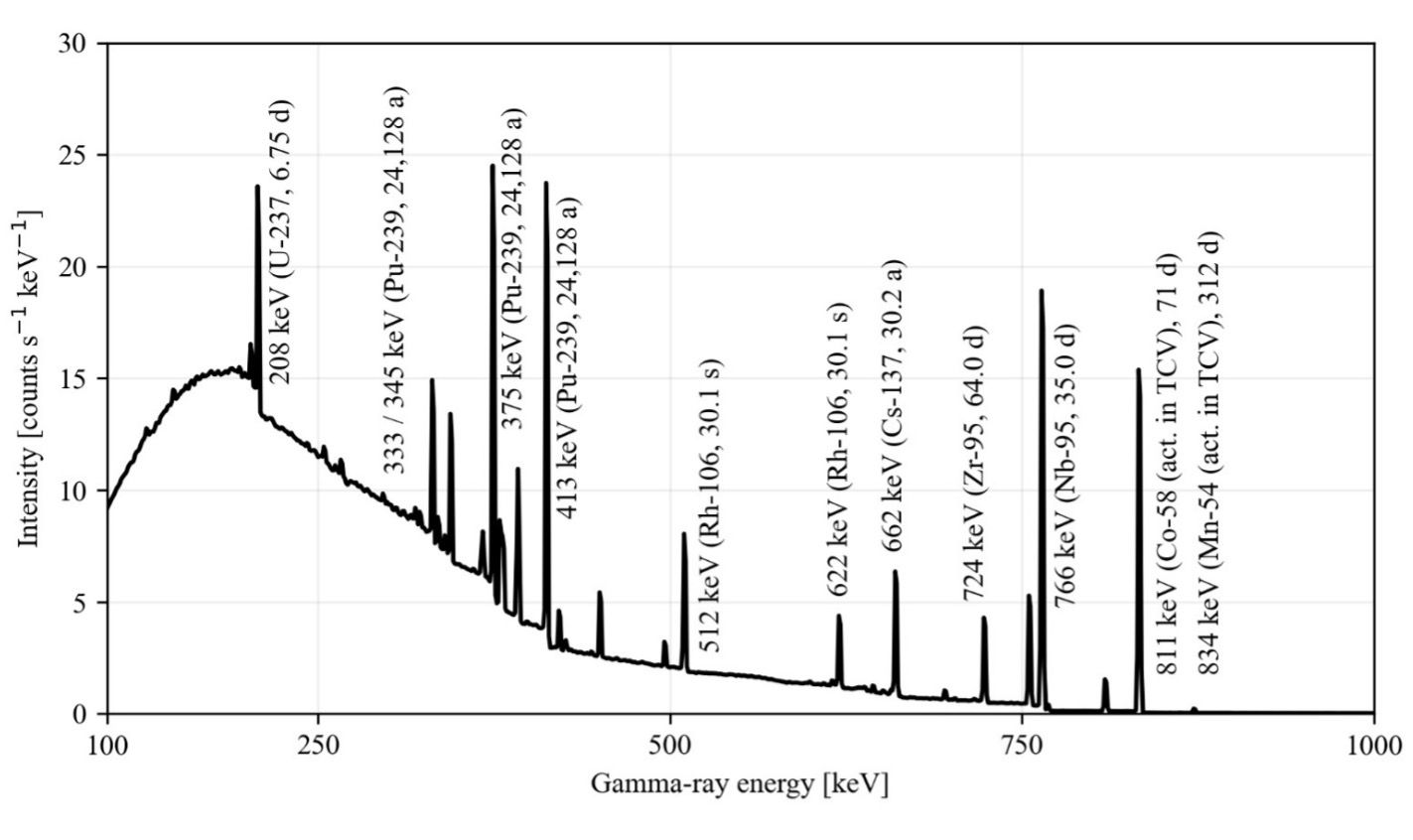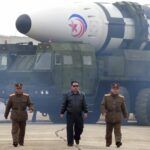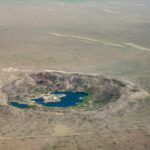New confidence-building measures can reduce tensions around subcritical tests
By Julien de Troullioud de Lanversin, Christopher Fichtlscherer | March 7, 2024
New confidence-building measures can reduce tensions around subcritical tests
By Julien de Troullioud de Lanversin, Christopher Fichtlscherer | March 7, 2024
In the past, countries used full-yield nuclear tests to verify the performance of their nuclear warheads, develop new warhead designs, expand their grasp of nuclear weapon physics, and even explore so-called peaceful uses of nuclear explosions. (The yield of a nuclear explosion refers to the energy that is released by fission of the fissile material in the nuclear weapon.) These tests were initially conducted in the atmosphere, the ocean, and space, but mounting concerns about radioactive contamination of the environment forced countries to conduct testing underground after the Partial Test Ban Treaty entered into force in 1963. Three decades later, negotiations were convened in Geneva on a treaty that would ban all types of nuclear weapon tests. In 1996, the UN General Assembly adopted the Comprehensive Nuclear Test Ban Treaty (CTBT), now ratified by 177 countries.
Because several required states have not ratified the treaty (including the United States, China, and now also Russia, which withdrew its ratification in 2023), it has not yet entered into force. According to the Vienna Convention on the Law of Treaties, however, states must follow the provisions of treaties they have signed (Vienna Convention on the Law of Treaties 1969). Since 1998, all nuclear powers except North Korea have observed a moratorium on nuclear weapon tests. Headquartered in Vienna, the Comprehensive Nuclear Test Ban Treaty Organization is responsible for verifying the implementation of this moratorium and preparing for the future entry into force of the treaty by supervising the International Monitoring System, a global network of monitoring stations and laboratories aimed at detecting nuclear explosions, including those conducted underground.
During the CTBT negotiations, countries agreed that the treaty was meant to be “zero yield,” which for many meant that the treaty was to ban any type of nuclear test explosion, irrespective of its yield (US Department of State 2011). In practice, without a definition of what a nuclear explosion is in the text of the treaty, countries agreed to adhere to the US interpretation of what “zero yield” means (US Department of State 2013). According to this interpretation, any explosive test or experiment involving a self-sustaining fission chain reaction is banned. (A self-sustaining fission chain reaction occurs when one nuclear fission event leads to one or more subsequent fission events.) This interpretation, called the “zero-yield standard,” does not strictly forbid the creation of nuclear fission yield during an experiment.
Since the late 1990s, the zero-yield standard has allowed nuclear weapon states to conduct various types of experiments—involving nuclear fission or fusion—to assess the safety and reliability of their nuclear arsenals without conducting nuclear weapon tests. These activities include inertial confinement fusion experiments—for example, at the US National Ignition Facility (NIF) and France’s Laser MégaJoule facility in Bordeaux (Besnard 2006)—or subcritical explosive tests—such as those at the US Nevada National Security Site and presumably at the former nuclear test sites in Novaya Zemlya, Russia, and near Lop Nur in China’s Xinjiang region.
Subcritical tests and accusations of supercritical tests
Subcritical tests are a type of nuclear very low-yield tests (i.e., nuclear explosive tests releasing less than one ton of TNT equivalent) in which chemical high explosives are used to compress a nuclear assembly (most often plutonium) to densities and temperatures near those achieved during the implosion of a nuclear weapon fission “primary.” To contain the explosion and the resulting radioactive debris, the United States conducts these tests in stainless-steel containment vessels placed in mined underground chambers called “zero rooms” (Figure 1). An essential feature of these tests is that the assembly always remains subcritical, which means that no self-sustaining fission chain reaction can be generated, and a test cannot lead to a nuclear explosion.

Various diagnostics during subcritical tests allow for the study of neutronic (i.e., the physics of neutrons) and other properties of plutonium under extreme conditions of temperatures and pressures. For instance, the United States has been using high-energy X-ray radiography to better understand the material properties of plutonium under compression and is now upgrading the experimental setup by building new X-ray radiography capabilities and a fusion source that will irradiate the compressed plutonium with neutrons (US Government Accountability Office 2023). These experiments will be able to create a subcritical fission chain reaction that quickly dies away and that can generate a minuscule energy yield on the order of a milligram of TNT equivalent. China and Russia are also reportedly upgrading facilities on their respective former nuclear test sites (Cheung, Lendon, and Watson 2023).
These new activities are making leaders in Washington, Moscow, and Beijing increasingly nervous, with the three capitals trading accusations. Russia has repeatedly accused the United States of preparing for a possible resumption of nuclear weapon tests (Osborn 2023). In 2019, the US government alleged that Russia and perhaps China have violated the nuclear test moratorium by conducting supercritical tests (US Department of State 2019).
Supercritical tests involve the compression of nuclear materials to such an extent that the mass becomes supercritical. That is, a briefly self-sustaining and exponentially growing fission chain reaction is initiated before the assembly blows itself apart. Like subcritical tests, these tests would usually be conducted in containment vessels underground, depending on their yield. But unlike subcritical tests, supercritical tests would violate the zero-yield standard, irrespective of the nuclear yield they produce.
Both the United States and the Soviet Union conducted very low-yield supercritical tests in the past. During the 1958–1961 moratorium, when the Soviet Union and the United States suspended their nuclear tests, the United States conducted certain types of supercritical tests—called “hydronuclear tests”—to study the “one-point safety” of the primaries of their nuclear warheads. (A warhead is said to be “one-point safe” if no significant nuclear yield is released because of an accidental detonation at any specific point in the high explosive, for instance due to the impact of a bullet.) The Soviet Union conducted such tests from 1958 to 1989, sometimes aboveground and with no containment vessels (Mikhailov et al. n.d.).
Possible rationale for supercritical tests
The United States is now able to ensure the “one-point safety” of its nuclear warheads without hydronuclear tests (JASON 1994; US Defense Department 1996). In 2012, the US National Academies of Sciences, Engineering, and Medicine concluded that supercritical tests would not enable a country with nuclear-explosion experience—such as Russia, China, or the United States—to develop new nuclear strategic capabilities (National Research Council 2012).
Other reasons could explain why a country might decide to conduct supercritical tests at very low yields, however. The United States is currently building an underground experimental setup at the Nevada National Security Site for its Neutron Diagnosed Subcritical Experiment program. The purpose of this program is to study the neutron multiplication of compressed plutonium in a subcritical test by measuring gamma rays emitted during fission events (Funk 2019). The more gamma rays emitted, the easier it is for the scientists to extract information. To generate a high amount of gamma rays from a subcritical test, scientists must initiate the fission chain reaction with a very high number of initial fission events. This can be achieved by irradiating the compressed plutonium assembly with a short pulse of neutrons or high-energy photons at very high intensity. But producing neutrons or high-energy photons in such great numbers and short time is very costly, both in terms of money and scientific capabilities. The United States is currently considering spending $70 million to build a Dense Plasma Focus instrument in which deuterium-tritium fusion reactions would generate between 1 trillion and 100 trillion neutrons in a burst as short as 60 nanoseconds, to irradiate compressed plutonium during subcritical tests.[1] (See Figure 2, below.)

Some countries might not be willing—or able—to invest this amount of money and scientific capabilities to build the high-end equipment required to generate high-intensity pulses of neutrons or photons. For those, a cheaper and simpler alternative can be to use supercritical tests instead of subcritical tests. Because supercritical tests lead to an exponentially growing fission chain reaction, they can start with a significantly lower number of initial fission events to produce as many gamma rays than subcritical tests. This would allow scientists to generate signals that are strong enough without upgrading their diagnostic equipment.
Absence of detection and verification methods for very low-yield tests
The US government did not disclose evidence to support its accusations that Russia and China may have breached the zero-yield standard by conducting supercritical tests—although satellite images of large containment vessels being moved into tunnels at former test sites may have raised suspicions.
One major issue is that the International Monitoring System cannot detect very low-yield explosions, let alone distinguish between subcritical and supercritical tests. Subcritical tests usually release energy of less than a few milligrams TNT equivalent, while hydronuclear tests have been recorded to release energy of a few kilograms. These levels are far below the 100-metric-ton TNT equivalent minimum yield detectable by the network of seismic stations used by the International Monitoring System (National Research Council 2012, Figure 2-8). The monitoring system also does not have any technical method or on-site protocol to verify whether a very low-yield test remained subcritical.
The absence of a verification framework for very low-yield tests, combined with growing tensions between the United States and both Russia and China, creates a slippery situation in which accusations can fly without being substantiated and verified by independent parties. This makes experts concerned that the perception of violations of the nuclear test moratorium at very low yield could incite countries to resume full-scale nuclear weapon tests. For instance, in 2019, following accusations against Russia and China, some officials in the Trump administration discussed the possibility of using these as a justification for the United States to resume full-scale nuclear testing (Bugos 2020). Most recently, in October 2023, Russia decided to withdraw its ratification of the CTBT and signaled its readiness to abandon the testing moratorium if the United States does (Isachenkov 2023; MacFarquhar 2023).
Need for more transparency efforts and new verification methods
Very low-yield tests have become a source of distrust and a possible spark in a race to resume nuclear weapon tests. The Biden administration seems to have become aware of these risks. To preempt any future doubts raised by rival countries about the US testing moratorium, the administration recently offered unilateral transparency measures and called for international collaboration in developing new verification measures for subcritical tests (Hruby 2023).
In November 2023, the National Nuclear Security Administration (NNSA) invited a dozen nuclear security experts from various institutions and non-governmental organizations, including from China and Germany, to visit the PULSE underground laboratory (formerly known as the U1a complex) at the Nevada National Security Site, where the United States conducts its subcritical tests. The visitors, including the authors, were taken underground to see the installations being built for the future Scorpius and Zeus projects that NNSA and the national laboratories will use to conduct measurements on their subcritical tests starting around 2030. (See Figure 3 below.)

Scientists and officials from the NNSA explained that they were working on multiple technical approaches that could be used by inspectors during on-site verifications to distinguish between subcritical and supercritical tests. According to them, the most promising method would measure the gamma rays emitted by fission events, using a gamma radiation detector. A decreasing rate of gamma ray emissions over time would indicate that a subcritical fission chain reaction is occurring, whereas an increasing rate would indicate that the fission chain reaction is supercritical. This verification method would use instrumentation like that already used by the experimentalists on-site, although they would probably require a gamma detector with circuitry that has been checked by inspectors to ensure the authenticity of its results.
Of course, this method can only be implemented if the host country informs inspectors prior to upcoming tests and allows measurements to be taken during the experiment. Such an approach cannot be implemented during challenge inspections whereby member states can ask for timely on-site inspections of suspected facilities or activities, which would become possible once the CTBT enters into force.
We have conducted research to assess the feasibility of an alternative technical method to distinguish between subcritical and supercritical tests up to one year after a test is conducted (de Troullioud de Lanversin and Fichtlscherer 2021). In this new method, the gamma rays emitted by long-lived radioactive fission products that were generated during the fission of plutonium and remain scattered inside the containment vessel are used to determine the quantity of fission products relative to plutonium. The fission products are generated proportionally to the fission yield and grow exponentially from a subcritical to a supercritical test, with a clear inflection point at a barely critical test. (See Figure 4, below.)

These technical verification methods would have to be embedded in specific protocols and transparency measures. For instance, continuity of knowledge for each used containment vessel could be implemented to ensure that tests and the resulting radioactive vessels would not be concealed. This could be achieved by fingerprinting a vessel (Strömbom 2021) or attaching a monitor tag to it for later authentication (Tolk 1992) before it is moved for final disposal underground. Remote optical surveillance and unattended monitoring systems like those used by the International Atomic Energy Agency for its nuclear safeguard activities could be installed in the tunnels and inside shafts through which new vessels and nuclear assembly packages are lowered (IAEA 2003). Such a monitoring system would not only establish continuity of knowledge for the containment vessels but would also help detect preparations for an upcoming experiment. A network of remotely monitored on-site seismometers could also be used to detect the detonation of an underground contained test, as the chemical explosive produces a yield in the range of a few kilograms TNT equivalent. NNSA has recently demonstrated such detection capabilities for a subcritical test at the Nevada Test Site (National Research Council 2012, 74-75).
Challenges ahead
The implementation of verification methods for subcritical tests is sure to encounter many challenges, first and foremost because they inevitably come with some level of intrusiveness.
Verification methods that require on-site measurements during a test will demand more accommodation on the part of the host, who might want to conceal certain activities from inspectors or be unwilling to reserve space for an additional measurement instrument that is not its own. For both during- and post-experiment methods, the gamma rays measured might contain information considered sensitive by the host. The gamma lines emitted by isotopes of plutonium and their decay or transmutation products could be measured and used to reverse-engineer the isotopic composition of the plutonium used in the test. While the United States has shared some information on the isotopic composition of its weapons plutonium, Russia seems to consider such information sensitive. Both methods would also benefit from additional information shared by the host, such as the intensity of the source used to trigger fission, but these too could be considered sensitive by the host.
In addition, containment vessels are typically entombed or buried after they have been used, which would complicate any post-experiment verification. Currently, at the Nevada site, a few days after a test, a containment vessel is placed in a large metallic container that is filled with concrete to entomb the vessel. A subcritical verification regime for the CTBT would require that countries do not entomb their used vessels until verification measurements have been carried out.
Transparency and verification as confidence-building measures
The demonstration of a practical method to verify that a low-yield test has not violated the zero-yield standard would strengthen confidence in the CTBT while weakening voices that raise doubts about the treaty’s verification regime to oppose it. Implementing a verification method would also help diffuse tensions over perceived breaches of the moratorium with supercritical tests, because countries would now have a transparent mechanism by which to confirm or disprove their suspicions and deter potential violators. An effective verification regime would greatly reduce the risks of a resumption of full-scale nuclear weapon tests and would reinforce the adherence of countries to the current moratorium.
Transparency efforts and collaborative initiatives could also constitute important confidence-building measures between nuclear powers. Organized visits to the sites where a country conducts its subcritical tests and where it is operating major upgrades, as the NNSA did in November 2023 at the Nevada site, are examples of initiatives that could help reassure other countries about the nature of these activities. Transparency measures could go as far as to invite scientists from other nuclear weapon states to verify subcritical tests using methods such as those discussed above.
Discussions between technical and policy experts from different regions on subcritical tests and the CTBT verification regime also would be an opportunity to build confidence. There are many scientific topics involving subcritical tests and plutonium science that technical experts from nuclear weapon states could discuss without entering classified domains. Likewise, policy experts, including those from non-nuclear weapon states and representatives from the Comprehensive Nuclear Test Ban Treaty Organization, could share their views regarding very low-yield tests and discuss transparency initiatives and verification protocols that would help facilitate the implementation of verification methods.
Such initiatives would echo scientific exchanges that were conducted between the United States and Russia just after the collapse of the Soviet Union to reduce tensions and open the door to new arms control paradigms (Hecker 2016).
The road to future discussions of these topics between China, Russia, and the United States promises to be paved with many obstacles. The recent call by the NNSA for transparency and collaboration around subcritical test verification is a good start. However, given strained US relations with Russia and China, any US-led effort in that area could come across as a way for the United States to expose Moscow and Beijing for their lack of transparency.
A safer way to gradually grow confidence among all parties, including non-nuclear weapon states, would be to start by engaging scientists and policy experts from national institutes, international organizations, and nongovernmental organizations that share an interest in this topic and connect with their governments. Discussions should frame the issue as a purely technical matter and avoid getting hijacked by political tensions between nuclear powers.
The wisest choice for the United States, Russia, and China would be to ratify the CTBT and abandon the modernization programs that have fueled a new nuclear arms race. As this is very unlikely to happen anytime soon, scientists, policy experts, and nongovernmental organizations must continue to push for more transparency among the three adversaries to dispel suspicions around subcritical tests and keep the world away from unnecessary and toxic nuclear weapon tests.
Endnotes
[1] Communication with engineers during a visit to the US Nevada National Security Site conducted on November 29–30, 2023.
Acknowledgements
The authors would like to thank Frank N. von Hippel and Moritz Kütt for their insightful and helpful reviews.
Together, we make the world safer.
The Bulletin elevates expert voices above the noise. But as an independent nonprofit organization, our operations depend on the support of readers like you. Help us continue to deliver quality journalism that holds leaders accountable. Your support of our work at any level is important. In return, we promise our coverage will be understandable, influential, vigilant, solution-oriented, and fair-minded. Together we can make a difference.






















